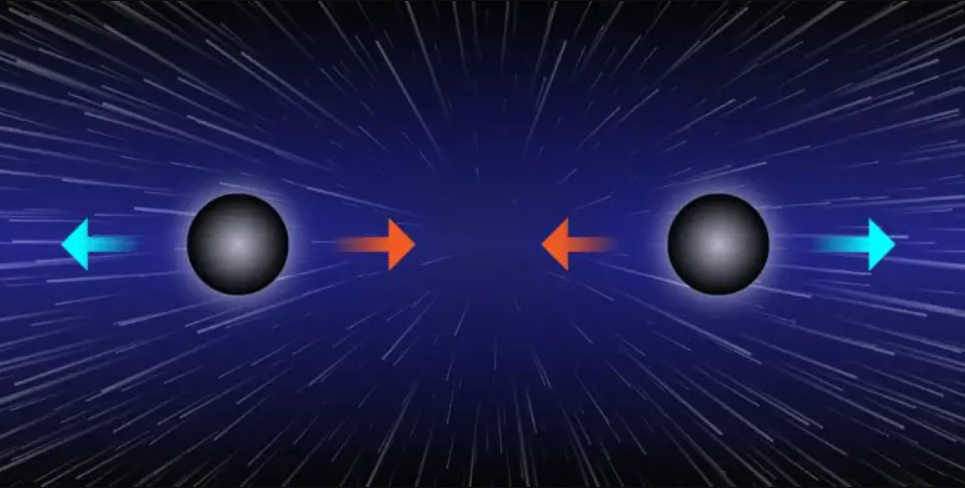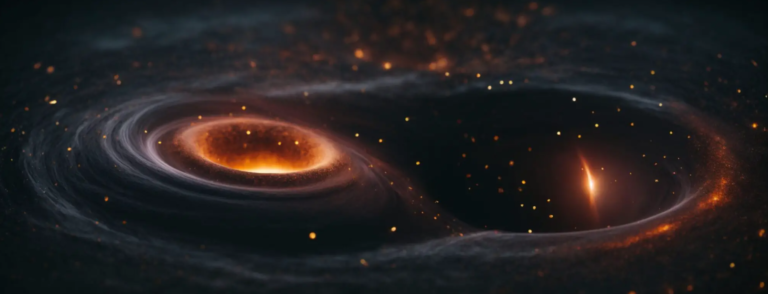Researchers Reveal the Potential Presence of Paired Black Holes Achieving Cosmic Balance
In a pioneering research endeavor, a team of scientists from prestigious universities has proposed a groundbreaking theory challenging established ideas about black holes. This theory suggests that black holes can exist in harmonious pairs, defying conventional wisdom regarding these enigmatic celestial entities.
Traditionally, the expansion of the universe and the gravitational force have been viewed as opposing factors. However, a novel concept introduced by the collaborative efforts of the University of Southampton, the University of Cambridge, and the University of Barcelona introduces the intriguing notion that black holes may coexist in perfectly balanced pairs. In such pairings, they would effectively act as a single entity, with the cosmological constant playing a crucial role in maintaining equilibrium between cosmic expansion and gravitational attraction.

A black hole represents a formidable cosmic phenomenon, defined by an immensely powerful gravitational force that ensnares everything, even light, within its clutches. Picture compressing the entire mass of Earth into a space no larger than a pea – that’s the magnitude and density of these cosmic giants. Traditionally, theories grounded in Einstein’s general relativity have maintained that black holes, whether stationary or rotating, exist in isolation. Any pairing of these celestial entities would inevitably result in a cataclysmic collision due to the irresistible force of gravity.
However, given the perpetually evolving nature of the universe, is it conceivable for a pair of black holes to coexist in perfect harmony? Could they potentially be perceived as a single entity?
Cosmologists propose that the universe’s origin was the Big Bang, followed by the dominance of a perplexing force known as “dark energy” nearly 9.8 billion years ago. This force, propelling the universe’s expansion, is scientifically labeled the “cosmological constant.” When integrated into Einstein’s theory of the universe, this constant alters the existing notions regarding the interactions of black holes.
In this recent revelation, through intricate numerical calculations, researchers have demonstrated that two static, non-rotating black holes can achieve equilibrium. The expansion driven by the cosmological constant and their gravitational attraction maintain them at a constant separation. From a distant vantage point, black holes existing in such harmony, unaffected by cosmic expansion, would appear as a singular entity.
Distinguishing between a solitary black hole and a pair in equilibrium poses a significant challenge, notes Professor Oscar Diaz. Professor Jorge Santos from the University of Cambridge further expounds that while the theory has been verified for static black holes, it might extend to rotating ones and even to configurations of three or four black holes, introducing a multitude of possibilities.
Do not forget to share your opinion with us to provide you with the best posts !




0 Comments